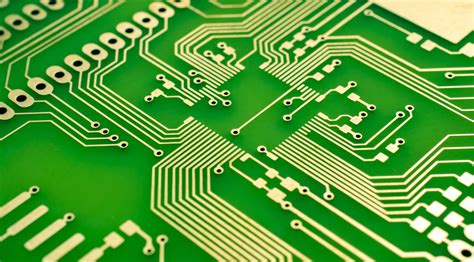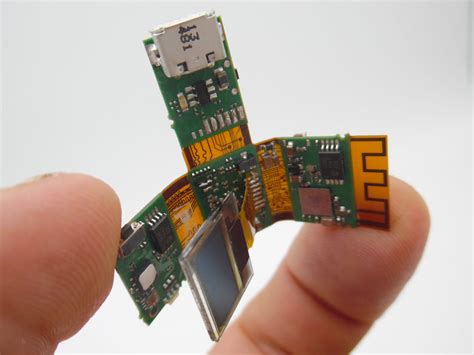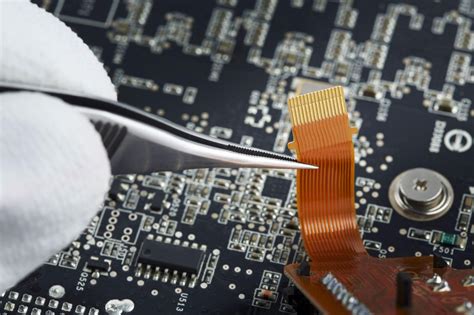Mastering Complex PCB Assembly Techniques for Efficiency and Precision
Key Takeaways
Mastering complex PCB assembly (“PCBA“) requires a comprehensive understanding of both the intricacies and challenges inherent in intricate circuit designs. By focusing on advanced techniques, practitioners can significantly enhance both efficiency and precision in their assembly processes. Key to this is the application of robust methodologies that prioritize consistent quality while reducing error rates. Utilizing the latest innovative tools and technologies not only streamlines the production process but also minimizes the risk of common pitfalls associated with high-density and multi-layered boards. Furthermore, continuous learning through case studies showcasing successful assemblies can provide invaluable insights into effective practices and emerging trends in PCB assembly. By integrating these strategies, individuals will be well-equipped to tackle the evolving landscape of electronic design and production, leading to optimal results in their PCBA endeavors.
Introduction to Complex PCB Assembly
In today’s fast-evolving technology landscape, the intricacies of PCB assembly (or PCBA) have reached unprecedented heights. As electronic devices become more compact and advanced, mastering complex PCB assembly techniques is essential for engineers and manufacturers alike. The process involves not just assembling components onto printed circuit boards, but doing so with a level of precision and efficiency that meets the demanding specifications of modern applications.
Complexity arises from numerous factors, including densely populated boards, varied component types, and intricate designs. Thus, understanding these challenges is crucial for successful assembly outcomes. Implementing best practices in PCBA can significantly improve throughput while minimizing errors. Techniques like automated optical inspection (AOI), selective soldering, and precise temperature control during reflow can enhance the overall performance of the assembly process.
Furthermore, as you delve deeper into the field of complex PCB assembly, consider leveraging modern technologies such as advanced CAD software and dedicated simulation tools to predict potential issues before they manifest on the production line. According to industry best practices:
“Planning each stage meticulously ensures accuracy and saves time in the long run.”
By embracing these advanced methodologies and tools, professionals can not only meet but exceed quality standards in PCB assembly, ultimately leading to innovative applications that drive the industry forward.
Key Challenges in Complex PCB Design
In the realm of pcb assembly, several challenges can arise that significantly impact both efficiency and overall quality. One primary issue is the miniaturization of components, which often leads to tighter packing in designs. This can result in difficulties related to airflow and thermal management, potentially impacting the functional longevity of the PCBA. Designers must also consider the potential for signal integrity issues, which become more pronounced as circuits grow increasingly intricate. Moreover, ensuring electrical reliability under varying environmental conditions adds another layer of complexity.
To illustrate these challenges more clearly, the table below outlines some common obstacles faced during complex pcb assembly:
| Challenge | Description | Potential Solutions |
|---|---|---|
| Miniaturization | Components are packed closely together | Utilize advanced layout tools |
| Signal Integrity | Loss of signal quality between tightly placed traces | Use impedance matching techniques |
| Thermal Management | Increased heat generation due to component density | Implement proper heat dissipation methods |
| Electrical Reliability | Variability under environmental stress | Conduct rigorous testing simulations |
Addressing these challenges is paramount for engineers working on pcba as it ensures higher performance levels and reduced failure rates. By applying innovative solutions and being mindful of potential issues early in the design process, manufacturers can enhance both operational efficiency and product reliability.
Advanced Techniques for Enhanced Efficiency
In the intricate realm of pcb assembly, leveraging advanced techniques is crucial to optimize both efficiency and precision. One effective approach is the implementation of automated assembly processes, which significantly reduces labor costs and minimizes human error. By utilizing pick-and-place machines, manufacturers can achieve rapid placement of components, enhancing productivity without sacrificing quality. Another vital technique involves the application of advanced soldering methodologies, such as selective soldering or wave soldering, which ensure robust connections and prevent defects commonly associated with more traditional methods. Additionally, the integration of real-time monitoring systems allows for immediate detection of issues during the pcba process, facilitating quick corrective actions that keep production flowing smoothly. Employing these innovative strategies not only addresses the complexities inherent in modern circuit designs but also fosters a culture of continuous improvement in PCB production. Overall, mastering these advanced techniques empowers manufacturers to navigate challenges with confidence while delivering high-quality pcb assemblies efficiently.
Precision Methods for High-Quality Assembly
Achieving high-quality assembly in pcb assembly processes requires a meticulous approach to both precision and accuracy. One of the foremost methods for ensuring quality is the use of automated optical inspection (AOI) systems, which allow for real-time monitoring during the pcba process. These systems identify defects such as misalignments and soldering issues, enabling operators to address problems before they escalate. Furthermore, incorporating surface mount technology (SMT) can significantly enhance the placement accuracy of components, facilitating smaller designs while maintaining robust performance. A critical aspect of high-quality pcb assembly is the careful selection of solder materials; using lead-free solder not only aligns with industry standards but also supports environmental sustainability. Additionally, standardized procedures that include thorough training for staff are vital. Techniques such as clear work instructions and checklists help ensure consistency and precision throughout the assembly process. Moreover, embracing a culture of continuous improvement can lead to innovations that further refine techniques in pcba quality management. Through these methods, manufacturers can significantly improve both efficiency and precision in complex assemblies, thus achieving superior results in every project undertaken.
Best Practices for Troubleshooting Common Issues
In the world of PCB assembly (or PCBA), troubleshooting common issues is crucial to maintaining efficiency and precision. One of the first steps is to ensure that there is a comprehensive understanding of the circuit designs, as even minor discrepancies can lead to significant challenges during assembly. Implementing a robust testing protocol early in the process can help in identifying potential failures before they escalate. It’s essential to work closely with component specifications; mismatches in tolerances can result in functionality problems that might not be apparent until final inspection.
Utilizing innovative diagnostic tools such as oscilloscopes and multimeters allows for real-time monitoring of signal integrity, which further narrows down the root causes of issues observed during assembly. Additionally, maintaining clear documentation throughout the process aids in tracking any recurring problems, making it easier to develop targeted solutions over time. Encouraging open communication among team members also plays a vital role; sharing insights about previously encountered challenges can lead to quicker resolutions and fosters a culture of continuous improvement.
Finally, adopting a proactive mindset towards potential faults will ensure that every aspect of PCBA aligns with quality standards. By remaining vigilant and embracing best practices, teams can significantly reduce downtime while enhancing both efficiency and overall product reliability.
Innovative Tools and Technologies in PCB Assembly
In the realm of PCB assembly, the advent of cutting-edge tools and technologies plays a crucial role in enhancing both efficiency and precision. Notably, advanced automated equipment such as pick-and-place machines simplifies the assembly process by accurately positioning components on the circuit boards, which drastically reduces human error. Furthermore, 3D printing is emerging as a game-changer in PCBA, allowing for rapid prototyping of intricate designs. This technology not only accelerates the development cycle but also facilitates the fabrication of complex geometries that traditional methods might struggle to achieve. Coupled with sophisticated software solutions for simulation and design verification, these innovations enable engineers to foresee potential issues before actual production begins, fostering a more seamless assembly process. Additionally, integration with IoT devices can provide real-time monitoring of assembly lines, leading to immediate adjustments that enhance overall production metrics. As these tools progressively reshape the landscape of PCB assembly, professionals in the industry must stay informed about these advancements to master their intricate challenges effectively.
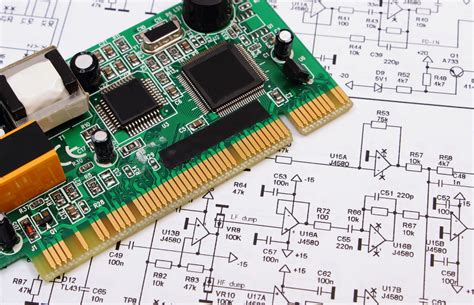
Case Studies: Success Stories in Complex Assemblies
In the rapidly evolving world of pcb assembly, numerous companies have made headlines with their innovative approaches to addressing the intricacies of pcba processes. One notable case involved a leading electronics manufacturer that adopted advanced techniques in complex PCB assembly to enhance production efficiency. By implementing automated soldering systems, they reduced assembly time significantly while ensuring precision in component placement. This allowed them to increase their output without sacrificing quality, ultimately adding value to their operations. Another example highlights a tech startup specializing in wearable devices, which faced challenges due to the size and complexity of their circuit designs. By embracing modular design concepts and utilizing enhanced simulation tools, they successfully navigated the hurdles of intricate assemblies. These stories not only showcase effective solutions but also inspire other organizations facing similar issues in their pcba journeys, underscoring that with the right techniques and tools, mastering complex pcb assembly can lead to remarkable success.
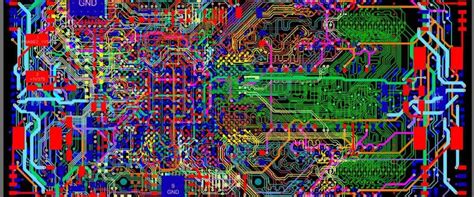
Future Trends in PCB Assembly Techniques
As the field of PCB assembly continues to evolve, several future trends are emerging that promise to enhance both efficiency and precision in the PCBA process. One significant trend is the incorporation of AI-driven technologies and machine learning, which can optimize production lines by predicting potential failures and improving real-time decision-making. Companies are increasingly adopting automated inspection systems, utilizing advanced imaging techniques to detect defects during the assembly phase. This not only ensures higher quality standards but also reduces manual errors.
Additionally, as products continue to become more compact and intricate, manufacturers are exploring innovative materials that enhance performance while being environmentally sustainable. The shift toward using new materials, such as flexible printed circuits, allows for more versatile designs that can fit within diverse applications, ranging from wearable technology to automotive components.
Moreover, the rise of Internet of Things (IoT) connectivity is driving demand for smarter assemblies that can interact seamlessly within a network. This trend emphasizes the significance of integrating PCB assembly with robust software solutions for better tracking and management of assembly data.
Overall, these trends reflect a concerted effort within the industry to not only tackle traditional challenges but also embrace a forward-thinking approach that prioritizes efficiency, quality, and sustainability. As such advancements unfold, mastering these techniques will be pivotal for any organization aiming to remain competitive in the rapidly changing landscape of electronics manufacturing.
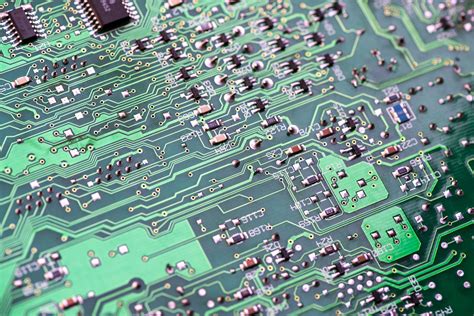
Conclusion
In navigating the intricate world of PCB assembly (PCBA), a deep understanding of both challenges and solutions is crucial for achieving outstanding results. The journey begins with recognizing the key challenges in complex PCB design, such as signal integrity, thermal management, and component placement. By implementing advanced techniques for enhanced efficiency, such as automation and precise layout strategies, you can significantly speed up the assembly process while ensuring that components function harmoniously. Additionally, employing precision methods for high-quality assembly is vital in maintaining the integrity of all circuit connections. Troubleshooting remains an integral part of the process; thus, adhering to best practices for troubleshooting common issues can mitigate disruptions during production. Lastly, keeping an eye on innovative tools and technologies in PCB assembly will not only help in solving problems proficiently but also pave the way for future innovations. By embracing these strategies, professionals can master the complexities of PCBA, thus driving forward quality and efficiency in circuit design and manufacturing.
FAQs
What is PCB assembly and why is it important?
PCB assembly, or PCBA, refers to the process of connecting electronic components to a printed circuit board (PCB). It is crucial because it ensures that electronic devices function as intended, enhancing reliability and performance.
What are the common challenges in complex PCB assembly?
Common challenges include handling small components, managing complex designs, and ensuring precision in placement. These issues can complicate the pcb assembly process, but understanding these obstacles helps in better planning and execution.
How can I improve efficiency in my PCB assembly process?
To enhance efficiency, consider adopting advanced techniques such as automated assembly equipment and innovative tools. Streamlining your workflow through proper planning can significantly reduce lead times during pcba operations.
What methods ensure precision in complex PCBA?
To achieve precision, implement stringent quality control measures, use high-resolution printing techniques, and regularly calibrate equipment. Utilizing the right tools for pcb assembly plays a pivotal role in maintaining quality.
Are there specific best practices for troubleshooting common issues during PCB assembly?
Yes! Always perform thorough inspections at different stages of pcba, maintain clear documentation of processes, and conduct regular training for staff to address potential problems proactively.
For those interested in exploring more about efficient pcb assembly, please click here: Andwin PCB Assembly.


